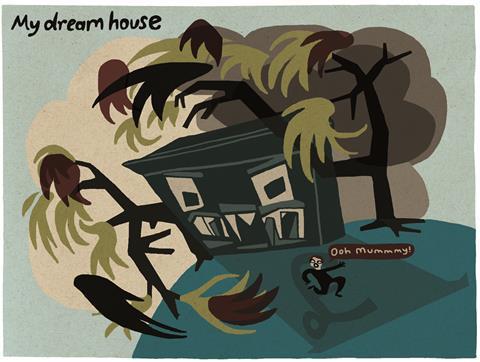The Giles Mackay case shows the folly of using a lump-sum contract on a project where the amateur client, inspired by House & Garden, wants a hand in the design…

Let me tell you more about the Giles Mackay drama my colleague Dominic Helps also discussed this week (A question of timing, 3 August 2012) … no, no, not a drama, a tragedy! It came to court on a matter of building a house for Mr and Mrs Giles Mackay. The odd thing about the whole matter is that, at base, the dispute, all the falling out, is such ordinary building industry stuff.
The original lump-sum price from the contractor, the original programme, all went to pot. So, as usual, there is a final account dispute. You and I would shrug and say, “that’s the way of things in construction”. So why has this become a tragedy? It is because this litigation, said the judge, is very old fashioned; it has involved full-blooded conflict between the parties to which there seems to have been little or no room for compromise. And the court heard (and judgment records) the anger, the fury, of the customer, Giles Mackay. He said some very hurtful things. He dug in so hard and has brought on a staggering loss … in millions, to himself and his family.
Giles Mackay is in his 40s. He qualified as a barrister, but never practised. Instead he went into property and asset management. In 2010 he was listed for the first time in the Estates Gazette rich list. Now a multi-millionaire. Ten years ago, Mr and Mrs Mackay embarked upon the journey to create their “dream home”. I have seen several times this dream, this gleam, this romance. It is a beautiful ambition and it collides head-on with our unromantic, hard-headed construction industry. Dreamers and builders don’t match. They don’t fall in love. They fall out … almost always. Oh, one other thing, if you read what Giles Mackay said about his architect, builder and advisers, you would say he was a nasty, bitter man. But if you met him, as I have, you’d likely find him a gentleman.
No contractor prices via a lump sum to be involved day-in-day-out with a project that is full of changes. He hasn’t got enough money to put up with all this ‘involvement’
Giles Mackay and two friends, Mr West and Mr Daniel, teamed up and paid £13m between them to buy the old BT telephone exchange site in swish Kensington. It made three fabulous plots for their three town houses. They spent another £1.5m on demolition etc, then accepted a tender from Walter Lilly & Co of £15.3m for all three houses to be built from scratch. They created the company DMW for all this.
Mr Mackay eventually went directly into contract with Walter Lilly for the £5.3m dream house. That lump sum became a nonsense. It always does when, as happened here, the design is incomplete and the homeowners “take a hand in the design”, the design changes, they add this and omit that. Mrs Mackay was fully involved with the architect, interior designers and contractor. That involvement, with unfolding hand-to-mouth instructions and ideas from House & Garden magazine, while your house is being piled, roofed, glazed, fitted out, works well if there is no lump-sum price or programme tying a builder down. No contractor prices via a lump sum to be involved day-in-day-out with a project that is full of changes. He hasn’t got enough money in his lump-sum price to put up with all this “involvement”.
Dreamers and builders don’t match. They don’t fall in love. They fall out … almost always
Giles Mackay is not a building man, not a developer; he doesn’t know our industry. He didn’t reckon on the JCT contract requiring “his architect” to wear not only “his client’s hat” but also that independent impartial hat to award extensions of time. Nor did he understand how “his professional QS” is supposed to impartially value works for the architect’s payment certificates. He swore at them like a trooper. The judgement is heaving with asterisks. He also fell out with his DMW partners. More asterisks! And with one of the legal team - asterisks galore! As to what he said of his builder … oh dear, I blush. But, this man was building his dream house. He was creating a temple, a monument, a symbol of his success, to show off. Does all that sound silly - even “wussy”? How does it fit with our hob-nailed boot industry?
Well, Mackay completely failed in rejecting Walter Lilly’s claim for extensions of time and compensation. Instead of the dream house costing £5.3m, he is to pay £11m. As for litigation, his own costs are a further £6m and he has to pay Walter Lilly’s legal costs of £4m. It is a fine house, but the dream went bad. The Mackays want to leave it. In fact, it’s up for sale. It could be yours - try £60m!

Tony Bingham is a barrister and arbitrator at 3 Paper Buildings, Temple




























No comments yet